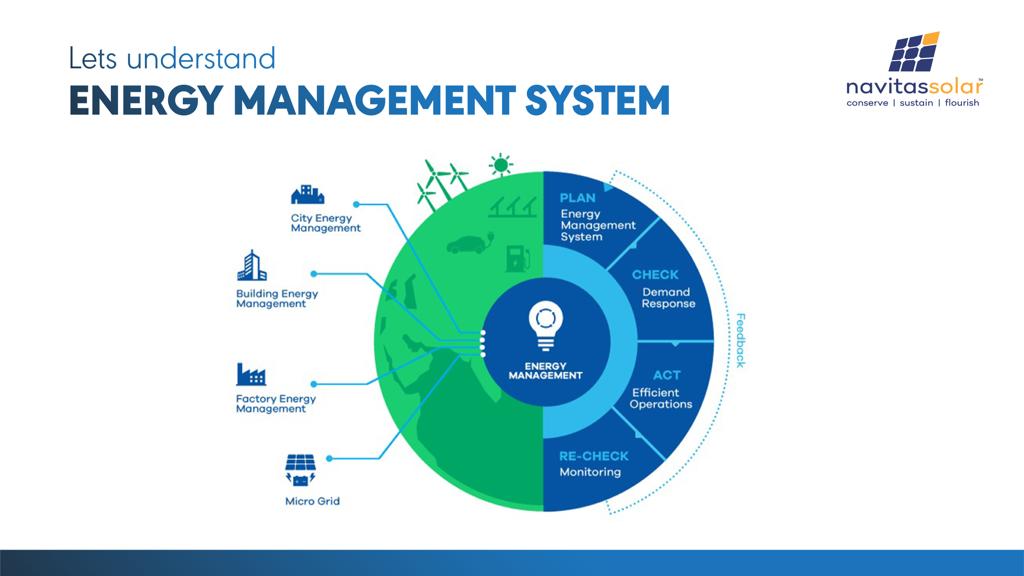What is an Energy Management System?
What is an Energy Management System?
Energy Management System enables you to manage and keep an eye on your electric utilities and electricity-using appliances. The HVAC systems in each guest room at your hotel, for instance, might be managed by an energy management system. You may minimize consumption and utility expenses while maximizing usefulness and comfort by using the EMS, which provides insight into energy utilization.
In addition to the EMS interface, an EMS typically consists of three other parts: metering sensors that track energy consumption, a control system that relays instructions from the EMS interface, and the actual controlled devices, such as air conditioners, and fans, or lights. Your home’s thermostat is a good illustration of a simple EMS. A controller that controls the heater on/off operation, a sensor that monitors the room’s temperature, and the actual heating or cooling element are all included in the thermostat.
Why should a company put an energy management system in place?
There are currently countless examples of businesses in the industrial and other sectors who have implemented an EMS and considerably enhanced their energy efficiency. They have been successful in lowering energy expenses, other associated costs, their exposure to fluctuating energy prices, and frequently, more crucially, in enhancing technical process control, productivity, and process stability. Many parts of your technical processes can be transformed if you are prepared to put in the time and necessary efforts to build an efficient EMS.
Why does energy management require a strategic approach?
Energy management systems focus just as much on reducing pollution as it does on preserving resources. Customers are becoming more conscious of larger sustainability challenges; what was once the domain of eccentrics is now urgent and mainstream. Along with increased regulation on environmental issues like climate change, many organizations are affected.
Even those who question the existence of climate change cannot ignore the finite nature of fossil fuels or the rising global energy demand. Emerging technologies can generate the power required by an individual to a community. Energy storage solutions are again a fantastic way to store energy and use it on a demand basis. But these all have prices and effects on the ecosystem, though.
The carbon footprint of some renewable energy sources is smaller. Using the energy management system, the overall efficiency of the system is enhanced which further helps in lowering the carbon emission.
Benefits of an energy management system
- A better understanding of periodic energy use (depending on the process, this might mean by the day or the second).
- Energy flows are the focus of more effective leadership, as seen in the formulation of energy goals and policies.
- Better attention to the usage of energy and how it might be more effectively used among workers and other interested parties.
- Energy usage that is more intelligently used—unnecessary, excessive, or irregular consumption can be found and addressed.
- It is possible to assess the advantages and disadvantages of using various energy sources, including renewable ones.
- Energy concerns can be taken into account when making capital investment decisions. Examples include new machinery or processes that use less energy or have a lower carbon footprint.
Energy Management Solution For Solar
Using generated electricity effectively is more difficult than generating it.
However, with the help of Energy Management Solution, it is very easy now. Now, the consumer will not need to sell the electricity to the grid for a low feed-in price because they can utilize it themselves. The feed-in tariff, which represents the revenue produced by returning excess electricity to the grid, is significantly lower now. The consumer can use generated electricity even more effectively. Alternatively, they can use their solar energy to heat water/ home, charge electric vehicle, or supply power to the home.
Not only that, the surplus power can be sold to the local community and that too requires an energy management system to manage all of the sub-meters at the consumer’s end.
Therefore, we can say that Energy Management System is the bridge to move from a traditional energy generation, distribution, and management to a smart system.


Related Posts
You May Also Like
A Step-by-Step Guide to Solar…
Read MoreEmpowering the Leaders of Tomorrow:…
Read MoreThe Future of Energy is…
Read MoreNavitas Solar Powers Up for…
Read MoreRCB Goes Green: How Navitas…
Read MoreThe Green Revolution in Cricket:…
Read More